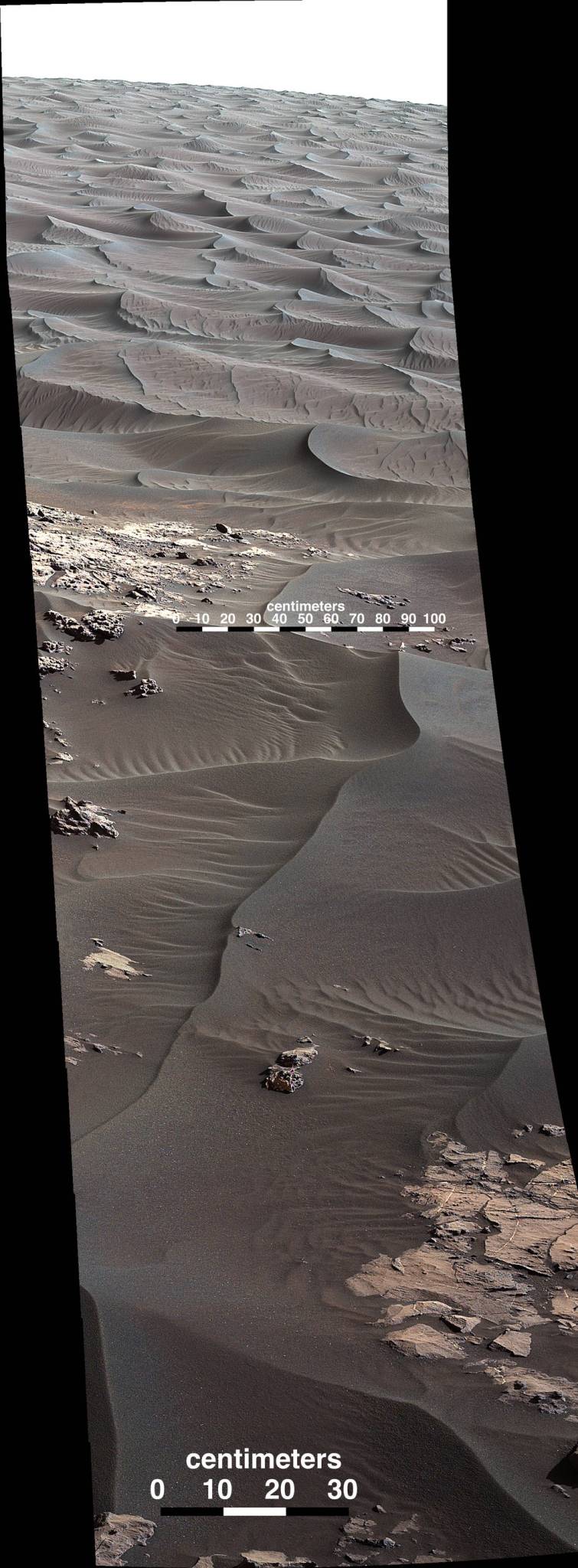The rippled surface of the first Martian sand dune ever studied up close fills this view of “High Dune” from the Mast Camera (Mastcam) on NASA’s Curiosity rover. This site is part of the “Bagnold Dunes” field along the northwestern flank of Mount Sharp. The dunes are active, migrating up to about one yard or meter per year.
The component images of this mosaic view were taken on Nov. 27, 2015, during the 1,176th Martian day, or sol, of Curiosity’s work on Mars.
The scene is presented with a color adjustment that approximates white balancing, to resemble how the sand would appear under daytime lighting conditions on Earth. Figure A includes superimposed scale bars of 30 centimeters (1 foot) in the foreground and 100 centimeters (3.3 feet) in the middle distance.
Malin Space Science Systems, San Diego, built and operates the rover’s Mastcam. NASA’s Jet Propulsion Laboratory, a division of the California Institute of Technology, Pasadena, manages the Mars Science Laboratory Project for NASA’s Science Mission Directorate, Washington. JPL designed and built the project’s Curiosity rover. For more information about Curiosity, visit https://www.nasa.gov/msl and http://mars.jpl.nasa.gov/msl.
Credit: NASA/JPL-Caltech/MSSS





























